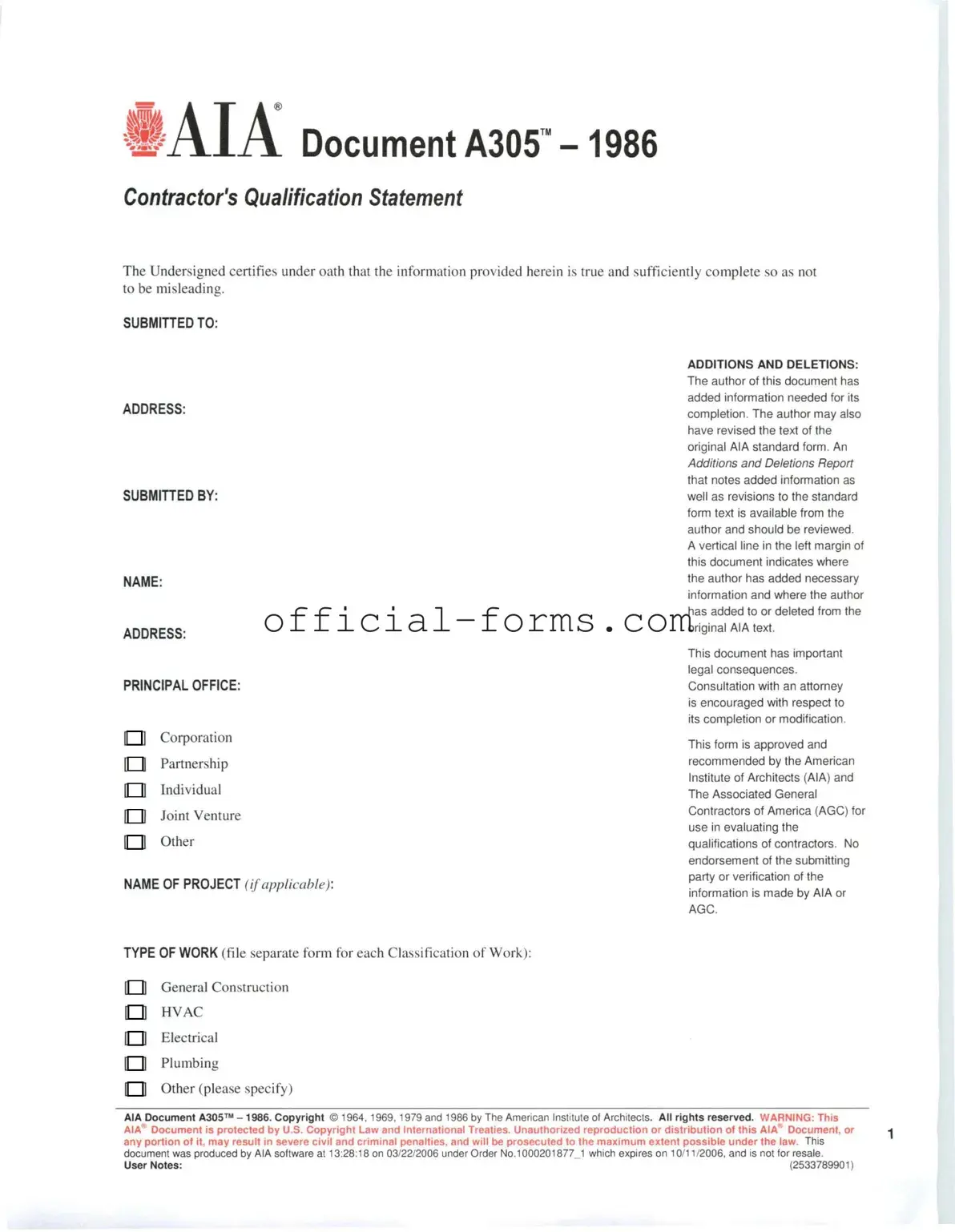When completing the AIA A305 form, individuals often encounter several common pitfalls that can lead to complications in the submission process. One frequent mistake is providing incomplete information. Each section of the form is designed to collect specific details about the contractor's qualifications and experience. Omitting any part of this information can result in delays or even rejection of the application.
Another common error involves inaccuracies in financial data. Applicants sometimes misstate their financial position, whether intentionally or unintentionally. This can include providing outdated figures or failing to include all relevant financial statements. Accurate financial representation is crucial, as it reflects the contractor's ability to manage projects effectively.
Many individuals also overlook the importance of ensuring that all required attachments are included with the form. The AIA A305 may require supplementary documentation, such as resumes, project lists, or financial statements. Failing to attach these documents can hinder the evaluation process and may lead to disqualification.
Additionally, people often neglect to review the form for grammatical and typographical errors. Such mistakes can undermine the professionalism of the submission. A well-prepared form reflects attention to detail and can positively influence the perception of the contractor's capabilities.
Another mistake is not adhering to the specified format or guidelines provided by the AIA. Each section of the form has particular instructions that must be followed. Ignoring these guidelines can result in a submission that is difficult to read or understand, which may affect the evaluation of the contractor's qualifications.
Some applicants fail to update their information regularly. The AIA A305 form is not a static document; it requires current and relevant information. Contractors should ensure that their qualifications, experience, and financial data reflect their most recent status to present an accurate picture of their capabilities.
Lastly, individuals sometimes submit the form without obtaining the necessary approvals or signatures. This oversight can render the submission invalid. It is essential to ensure that all required parties have reviewed and signed the document before submission to avoid any issues.
